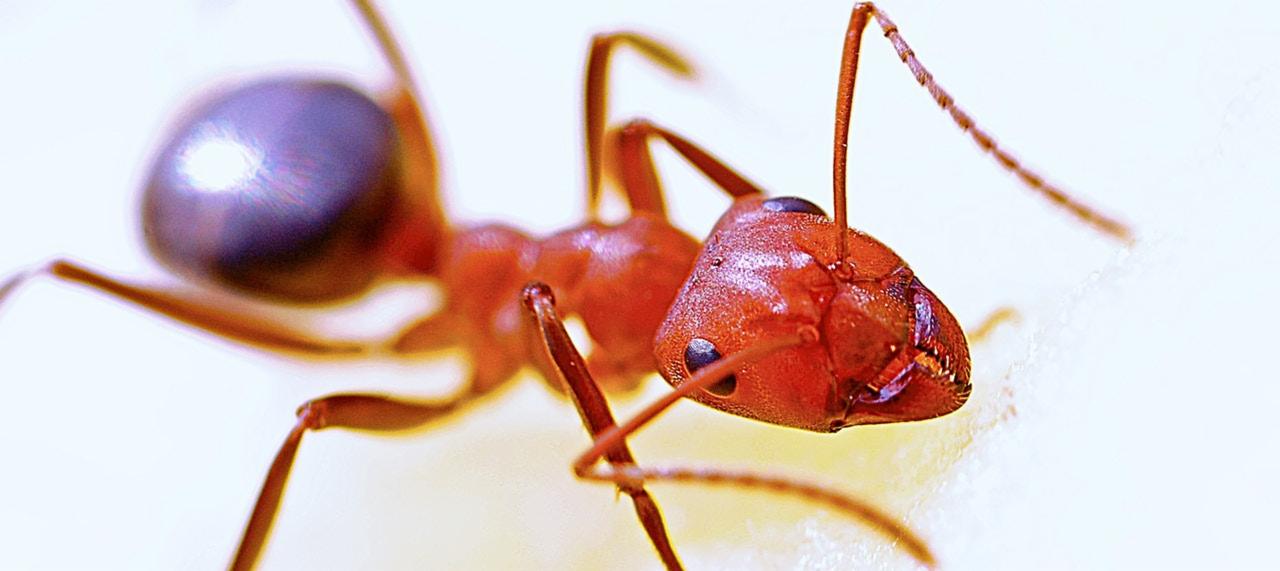
How to Kill Fire Ants
It is shiny reddish brown, less than a quarter inch long, and it has six legs. You may not know fire ants when you see one, but you certainly will once it bites you.

By the looks of this map from the Agricultural Research Service at the United States Department of Agriculture, fire ants aren’t only here; they are thriving. While there are several species of fire ants in the United States, the Red Imported Fire Ant (Solenopsis invicta) is considered the worst of them. It’s aggressive, invasive, and prolific, and its bites are painfully worthy of its name.
Where to Find (aka Avoid) Fire Ants
Fire ants live in mounds and can survive in almost any kind of soil, preferring the warm, open areas of pastures, lawns, parks, and fields. If the right soil conditions are met, they can build mounds up to two-feet tall, especially if they are located next to rotting logs and stumps. Unlike other anthills, fire ant mounds have more than one entrance, so treating for them is tricky, especially if they are provoked.
How to Kill Fire Ants
While preventing fire ants from moving into your favorite (or even least favorite) spots would be ideal, these methods are often unproductive, costly, wasteful, and time-consuming. Killing fire ants as you find them is a more conservative and effective approach. You’ll need the best of two words: the best way to kill fire ants and one of the best fire ant killers on the market. And you’re in the right place to get both.
Ragan & Massey’s Compare N Save Fire Ant Killer is easy to use and applied directly on the ground, stopping fire ant mounds from progressing and preventing their reestablishment. Read the product label carefully, and follow these general rules.
- Read product label (it bears repeating).
- Wait until the weather is cooler than 80 degrees.
- Start in the early morning or late evening, when most of the ants are dormant and in the mound.
- Wearing protective gloves, scoop about a 1/2 cup (NOT the ones you use for baking!) of fire ant killer and carefully sprinkle it over the mound.
- The granules are water activated, so this next step is crucial. You’ll need to drench the mound with one to two gallons of water, using sufficient force to break the apex of the mound while being gentle enough to avoid run-off; you want the insecticide to flow into the ant tunnels, not into your surrounding turf.
- Treat new mounds as they appear, until they stop appearing.
How To Treat Fire Ant Stings
If provoked, fire ants will swarm and sting repeatedly, anchoring themselves to your skin and delivering a painful wallop with each puncture. They leave behind groups of swollen red spots that develop a painful blister and a lasting memory; once you experience the itching, searing pain that lasts for up to a week, you won’t want to do it again.
While you can’t heal fire ant bites, you can make yourself more comfortable by washing the area with soap and water and covering it to help you avoid bumping or scratching the area. Ice helps with the swelling and the itching, as does over-the-counter steroid creams and antihistamines. Some people are deathly allergic to insect bites, so take precautions and seek medical help when necessary!
Prevent another fire ant sting with Ragan & Massey Fire Ant Killer.